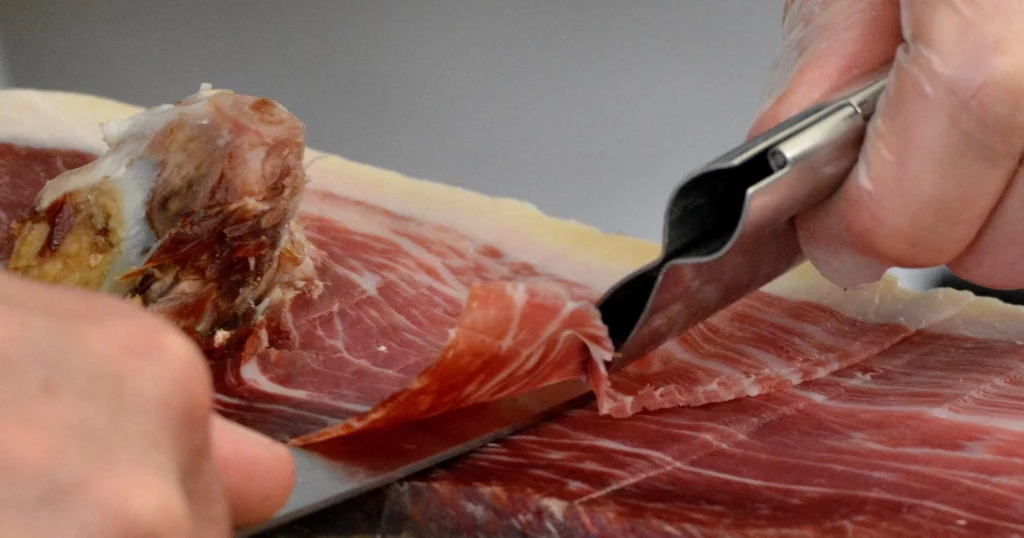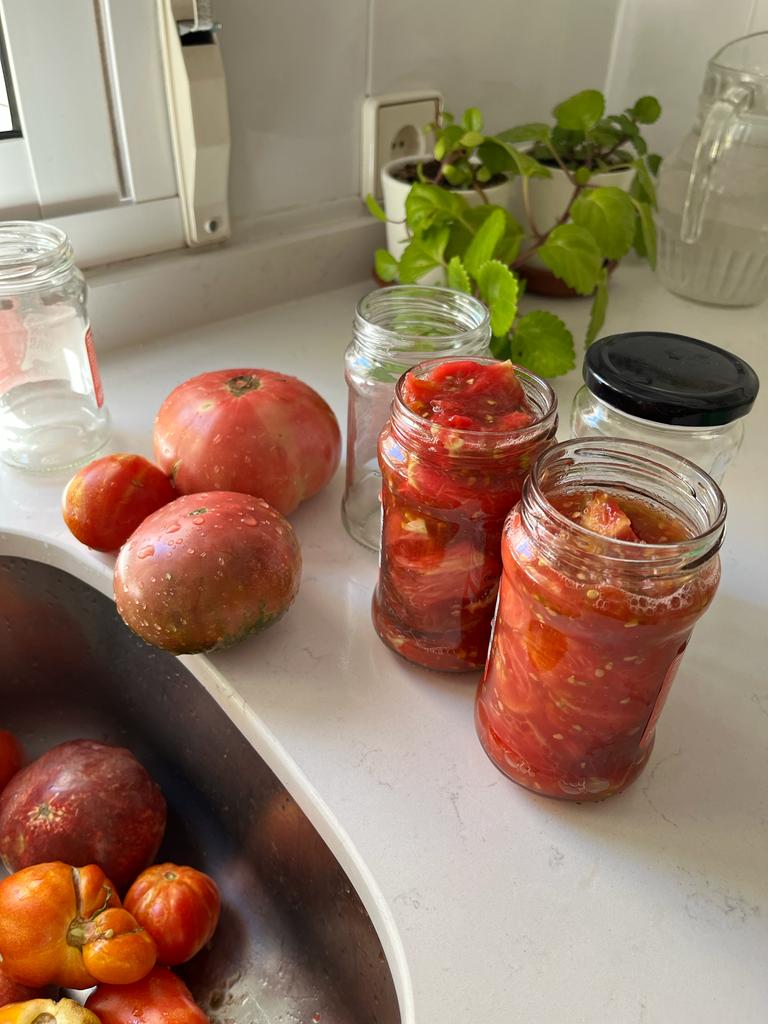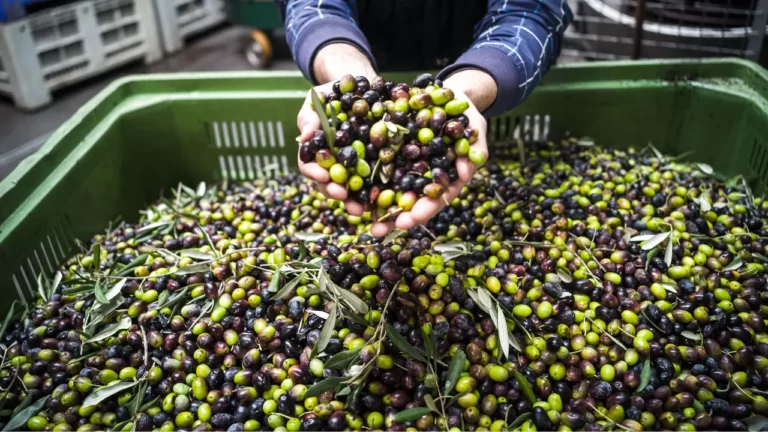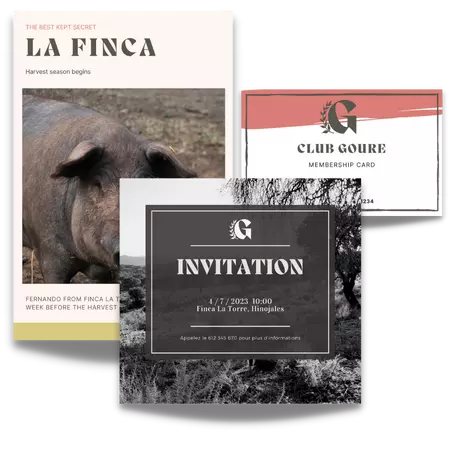Jamon Ibérico is a Spanish delicacy with a history and tradition that dates back hundreds of years. Cured with salt and typically smoked over oak, this unique meat has a unique flavor and texture that can’t be matched. But without proper curing and preservation, the exquisite flavor of Jamon Ibérico can easily be lost. To ensure that you get the most out of this delectable meat, this article will provide a comprehensive guide on preserving Jamon Ibérico and keeping it fresh for longer periods of time. So read on to learn everything you need to know about storing Jamon Ibérico!
Tabla de Contenidos
Introduction to Jamon Iberico
Jamon Iberico is a cured Spanish ham that is renowned for its distinct flavor and texture. It is made from the hind legs of an Iberian pig, which is raised in specific regions in Spain such as Estremadura, Extremadura, Galicia and Huelva. These pigs are fed a special diet known as “bellota” – acorns, herbs and grains – to help develop their unique flavor and texture. As result of this diet, the meat from these pigs contain an abundance of monounsaturated fat that contributes to its flavor and aroma when cooked.
The process of creating Jamón Ibérico involves curing and smoking the meat to a specific degree of perfection, with careful attention paid to the breed and diet of the pigs. This involves salting and drying the legs of the animal for at least 24 months. During this time, the meat develops an intense flavor that sets it apart from other hams. Once dried, it is then smoked over oak wood or juniper branches for a minimum of 12 months; this gives it a complex flavor profile that can only be achieved with proper care and time.
This delicacy is beloved by connoisseurs all over the world, making it one of Spain’s most popular exports. In recent years, there has been an increasing demand for this product, which has resulted in more Jamón Ibérico being shipped to different countries around the world. It can now be found in many fine dining restaurants, specialty stores and online markets. As this product becomes ever-more popular and widely available, so too does its need for proper preservation become clearer – especially as Jamón Ibérico can be quite expensive. Proper preservation is necessary to ensure that all of the flavor notes are preserved until being served or eaten and also to reduce spoilage or contamination of the product. Therefore, understanding how to properly store and preserve Jamón Ibérico is essential if one wants to enjoy its full potential.
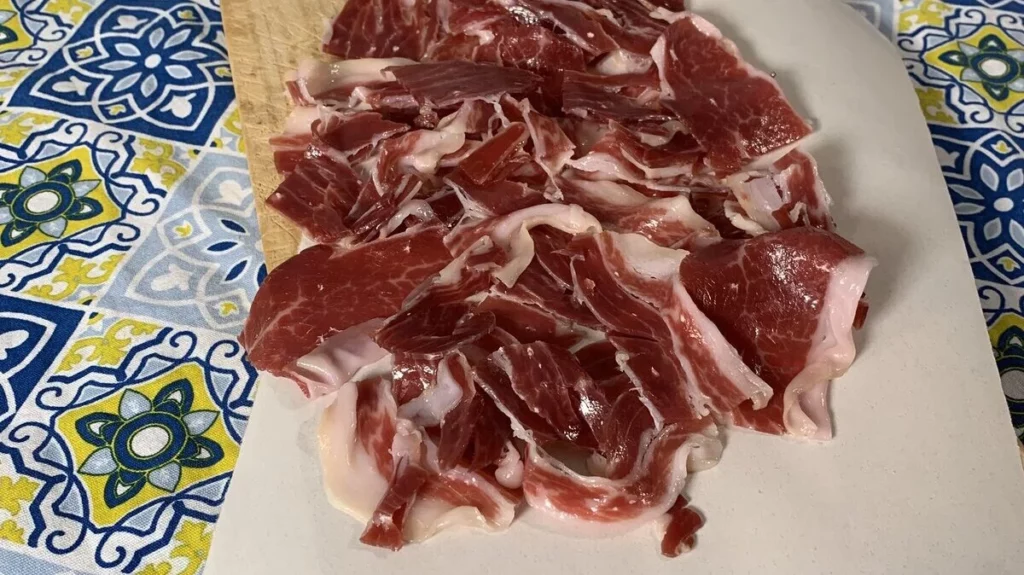
Types of Jamón Ibérico
Jamón Ibérico is a type of cured meat made from black Iberian pigs, found in Spain. As one of the most famous delicacies in the country, this ham is renowned for its distinct flavor and texture—it is characterized by its nutty aroma, tender texture, and slightly sweet taste. There are two main types of Jamón Ibérico: Ibérico de Bellota and Ibérico de Cebo.
Ibérico de Bellota is considered the highest quality jamón available due to its use of pork sourced from free-range, acorn-fed pigs.These hams are fed exclusively on acorns, as well as herbs and grasses which give them their distinct flavor. These hams have a deep red color and have a high fat content that contributes to their melt-in-your-mouth texture. In comparison, Ibérico de Cebo has a lighter color and is leaner than the Bellota variety due to its pork sourced from grain-fed pigs. These hams are not fed exclusively on acorns – instead they are fed on grains and grasses which gives them their unique flavor. Both types are aged for at least 24 months before being sold.
Each type of Jamón Ibérico has distinct characteristics that make it unique and desirable to consumers. For example, Bellota hams have a more intense flavor thanks to its high fat content, while Cebo hams have an intense flavor but are not as fatty as the other variety. Furthermore, Bellota jamón also has a richer color which makes it look more appealing when served. Regardless of how it is prepared or served, Jamón Ibérico can be enjoyed in many different ways—whether thinly sliced off the bone as tapas or incorporated into traditional dishes like paella or empanadas.
The preservation of these two types of Jamón Ibérico is essential in keeping its distinctive flavor intact and ensuring its longevity – hence, proper storage techniques must be utilized to maintain its quality. In order to achieve the desired results with this special Spanish delicacy, it’s important to understand the differences between each type of jamón and find out which type best suits your personal tastes and preferences.
Recognizing Genuine Jamón Ibérico
Authentic Jamón Ibérico is easily identified by its distinct color and texture. Its rich maroon hue, combined with its smooth, oily surface, are telltale signs that it is genuine. There should also be a subtle smoky aroma that becomes more intense as the slices of meat become thinner. The label on the product must include its minimum Acorn Content to ensure that it contains the necessary amount of Iberian pigs’ diet.
Jamón Ibérico from Spain is classified further according to its origin and the aging process it goes through. Knowing the source country is key in recognizing authentic Jamón Ibérico. Aside from this, the packaging should include details such as when it was purchased, where it was made, and how long it has been cured and stored. If you cannot find this information on the packaging or accompanying log book, make sure to inquire further to ensure that you are buying an authentic product. Furthermore, if you can still taste an acorn flavor when you sample the meat, then you can be sure the Jamón Ibérico is genuine.
By understanding its origin and identifying its unique characteristics – such as its color, texture, aroma, and minimum Acorn Content – you can be sure that what you have bought is a genuine Jamón Ibérico. Not only will you have a superior quality product for yourself or your guests; you will also have ensured its safety and longevity through proper identification and preservation techniques.
Ideal Climate Conditions for Jamón Ibérico Preservation
Jamón Ibérico is best preserved when stored in an environment with a controlled temperature and humidity. The specific optimal conditions vary depending on whether the product is fresh, dry-cured, or semi-cured. For fresh Jamón Ibérico, temperatures ranging from 10°C to 20°C and a relative humidity of 65-75% are ideal for preserving the meat’s flavor and texture. Dry-cured Jamón Ibérico should be stored at slightly higher temperatures of 15°C to 25°C, with a relative humidity of 55-65%. Finally, for semi-cured Jamón Ibérico, temperatures should range from 5°C to 20°C with a relative humidity of 70-80%.
To ensure that these ideal climate conditions are met, it is necessary to use the appropriate packing materials as well as properly seal them so air does not enter or escape from the container. Moreover, storing Jamón Ibérico away from direct sunlight is key to preserving its quality and safety. Most importantly, it is essential to store Jamón Ibérico in a cool, dry environment such as a refrigerator or wine cellar. Refrigerators have the advantage of providing steady temperatures and keeping out unwanted moisture, while wine cellars offer more consistent humidity levels and often contain a system designed to maintain correct ventilation.
No matter which storage facility is chosen, it is important to keep track of the temperature and humidity levels to ensure that they remain within the ideal ranges over time. Additionally, frequent monitoring is advised if any changes occur in the environment such as when there is an unexpected heat wave or cold spell. Similarly, regular cleaning of the storage containers and shelves will prevent any buildup of bacteria or molds that might harm the product’s quality.
In conclusion, taking steps to ensure proper climate conditions for storing Jamón Ibérico is essential in order to preserve its flavor and texture and guarantee its safety for consumption. By utilizing refrigerators or wine cellars, constantly tracking temperature and humidity levels, and regularly cleaning surfaces, it is possible to achieve optimal results when preserving this Spanish delicacy.
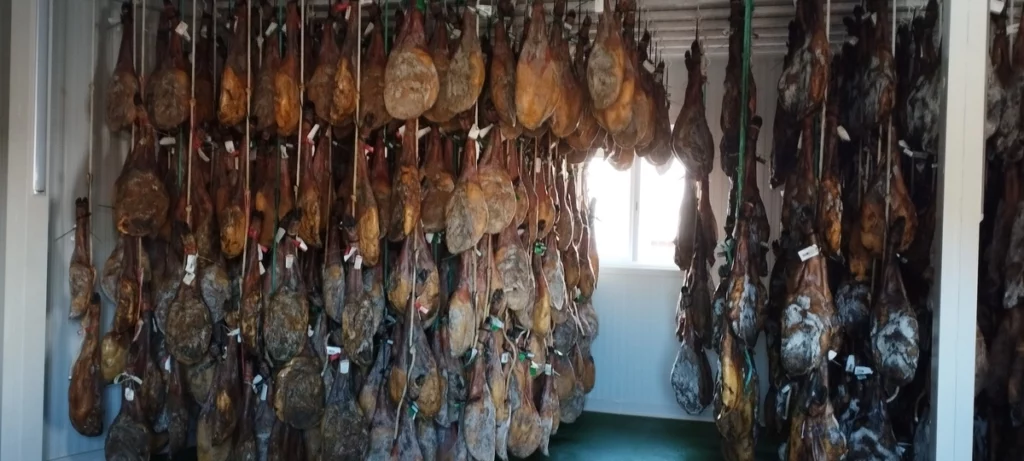
Necessary Ingredients for Curing Jamón Ibérico
Salting and marinating Jamón Ibérico is an integral part of the curing process, as it helps to remove moisture from the meat and preserve it for longer periods of time. To achieve a unique flavor and aroma, a combination of different spices is essential. Paprika, garlic, bay leaves, and pepper are some of the most commonly used spices for curing Jamón Ibérico, as they bring out a deep rich flavor while adding an unmistakable aroma to the cured pork. In addition to these spices, wine, vinegar, or other alcoholic drinks can be added to increase the taste and give the Jamón Ibérico its distinctive smoky aftertaste.
Moreover, other flavoring agents like orange or lemon zest can be used to give a subtle yet distinct citrusy flavor to Jamón Ibérico that pairs perfectly with its salty taste. Furthermore, in order to ensure that all these ingredients interact properly with each other and adhere to the meat, some type of fat such as olive oil is usually included as well to help bind everything together. By using all of these necessary ingredients in addition to proper salting techniques, Jamón Ibérico will be perfectly preserved without losing any of its delicious flavors or aroma.
The curing process for Jamón Ibérico requires special attention and knowledge in order to achieve the best results. Different types of Jamón Ibérico require different curing processes and ingredients in order to reach their full potential. Each type must be monitored carefully during the curing period so that it receives just enough salt, spice, fat and moisture to ensure that it is safe for consumption and that it reaches optimal flavor profile when finished. In conclusion, when done correctly, with the right selection and combination of ingredients, Jamón Ibérico can be perfectly preserved without sacrificing any of its delicious flavors or aroma.
Correct Type of Packaging for Jamón Ibérico
When it comes to storing and preserving Jamón Ibérico, the type of packaging used is critical. Vacuum sealing is the ideal option, as it ensures that air and other contaminants do not come into contact with the meat. This helps to keep it fresh for a longer period of time, while also protecting its flavor and texture. Airtight containers can also be used to keep out unwanted moisture and bacteria, while allowing the aromas of the Jamón Ibérico to remain intact.
To achieve the best results, make sure the container you choose is completely sealed and odorless. Additionally, ensure that the size is appropriate for the piece of meat you are preserving: one that is too large may cause extra air to enter, resulting in spoilage.
Paper or plastic wrapping should be avoided when storing Jamón Ibérico, as these materials tend to create an environment that encourages the growth of bacteria. In addition, paper or plastic wrapping can cause the meat to become dry and brittle over time, reducing its quality and taste. Therefore, be sure to use only hermetic containers, preferably made from ceramic or glass – but never plastic – for storage purposes.
Utensils made from stone or wood can also help preserve the flavor and texture of the Jamón Ibérico during storage. Stone utensils (such as granite or terra cotta) can help keep in moisture and ensure that air does not reach the meat. Wooden utensils such as wooden boards, spoons, knives and forks are also ideal options for removing slices of Jamón Ibérico without causing damage to its structure or taste. When selecting your utensils, choose those with a non-porous surface to prevent any excess water absorption which can affect the flavor and texture of your Jamón Ibérico.
Finally, remember that no matter how good your packaging and storage techniques are, nothing beats proper curing techniques for ensuring that your Jamón Ibérico remains delicious for years to come!
Native vs International Preservation Methods
The Jamón Ibérico has long been considered a delicacy in its native country of Spain, but with its increasing popularity around the world, so too has come an international demand for the product leading to different methods of preservation. The Jamón Ibérico preservation methods vary drastically between its native Spain and other countries, making it imperative for consumers to understand the differences in order to ensure they receive a genuine product with proper storage and handling.
The climate, culture, and ingredients used in Spain are unique to the preservation of Jamón Ibérico, making it difficult for individuals located outside of the country to replicate these steps. In Spain jamón is cured with sea salt and air dried over several months while being regularly rotated to ensure proper curing and flavour development; however, many countries do not possess the same climate or ability to take such time-consuming measures when preserving their products. As a result, some producers may opt for more efficient means of preservation by utilizing artificial means such as vacuum packing or accelerated drying processes instead.
In comparison to traditional Spanish methods, jamón ibérico preserved internationally has notably different characteristics that may not appeal to consumers accustomed to authentically cured Spanish product. For example, an international product may be overly salty due to excessive use of curing salts or lack flavour due to accelerated drying processes or vacuum packaging which limits airflow and reduces time for flavour development. Additionally, using artificial means often increases the cost of production as well as the risk of spoilage if not handled correctly through storage and distribution channels.
Proper storage techniques are essential for ensuring that a Jamón Ibérico remains of the highest quality and safety standards regardless of where it is consumed. It is recommended that individuals storing jamón ibérico abroad keep it in an area that is neither too hot nor too cold and away from direct sunlight or moisture. Vacuum-sealed packaging helps prevent damage from oxidation and contamination from humidity during transportation; however, it should be opened in order for air circulation before storing in a refrigerator. To further ensure optimal quality, it is also advised to check expiry dates as well as looking for signs of discolouration or mould growth upon opening.
Overall, Jamón Ibérico preservation can be a complex process due to the variety of factors that come into play when preserving this Spanish delicacy. Native methods will produce a high-quality product that has all the characteristics associated with traditional Spanish
Benefits of Proper Jamón Ibérico Preservation
Properly preserving Jamón Ibérico (also known as Ibérico Ham) is essential for creating a quality product that can be enjoyed for years to come. It is a Spanish delicacy made from pork, salt, and herbs, and it requires specific storage conditions to ensure its flavor, safety, and value. There are many benefits of properly preserving Jamón Ibérico, including creating a long-lasting and deliciously flavorful product, guaranteeing a safe product free of any biological contaminants, and leading to more value than improperly preserved or adulterated products.
The first benefit of proper preservation comes in the form of creating a long-lasting and flavorful product over time. The curing process involves salt, which dries out the meat and prevents bacteria growth while also enhancing the flavor. With this method, the meat can be stored without refrigeration for an extended period, ensuring a product with maximum flavor retention. This longevity of taste is one that yields a tender texture with a subtle blend of salty and sweet tastes combined with the rich fatty flavors from the full-bodied pork used to make Jamón Ibérico.
When considering safety issues, proper Jamón Ibérico preservation also plays an important role in killing off any unwanted microbial contaminants such as bacteria and mold spores. This is done by heating the cured pork to an internal temperature of around 140 degrees Fahrenheit before storing it away in a cool environment. This ensures that any potential biological hazards are eliminated before storage, ultimately producing a safe product free from undesired contaminants when consumed. This level of assurance is especially beneficial in countries where bacterial contamination is common due to lack of food safety regulations and poor enforcement of existing standards.
In addition to safety concerns, properly preserving Jamón Ibérico also leads to more value for the product. Improperly preserved or adulterated variants are often worth less compared to genuine Iberico ham due to their reduced quality and flavor profile. By following the traditional methods of preparation—such as manipulating the ideal temperature and humidity levels—the consumer obtains a premium quality item that is worthy of the Spanish culture and tradition. Furthermore, this enhanced quality leads to higher prices for authentic Jamón Ibérico compared to other kinds of cured pork products available on the market.
In conclusion, there are several significant benefits of properly preserving Jamón Ibérico including creating a long-lasting and deliciously flavorful product, safely
Conclusion
Jamón Ibérico is a delicious Spanish delicacy that must be properly preserved if it is to maintain its quality and safety. The ideal climate conditions, necessary ingredients for curing, and correct type of packaging are all essential factors in order to keep the product fresh and safe to consume. Understanding the different types of Jamón Ibérico available on the market is also key; this will allow you to recognize the genuine product and make sure you are purchasing the highest quality of this delicious food. Additionally, there are both native and international methods for preserving Jamón Ibérico, each of which offer different benefits. Ultimately, in order to enjoy this Spanish delicacy to its fullest potential, proper preservation is essential. Following the tips outlined in this article will help you ensure that your Jamón Ibérico stays fresh and safe for consumption now and into the future.
In conclusion, Jamón Ibérico is a delicious Spanish delicacy that must be properly preserved in order to ensure its safety and quality. By following this guide, you can be sure to store your Jamón Ibérico in the ideal climate conditions, using the correct type of packaging, and with the necessary ingredients for curing and smoking. Be sure to remember to recognize the genuine product, compare and contrast the native and international methods of storage, and understand the important benefits of proper preservation. Jamón Ibérico is a delectable treat, and with the right knowledge and care, you can be sure to keep it delicious.

